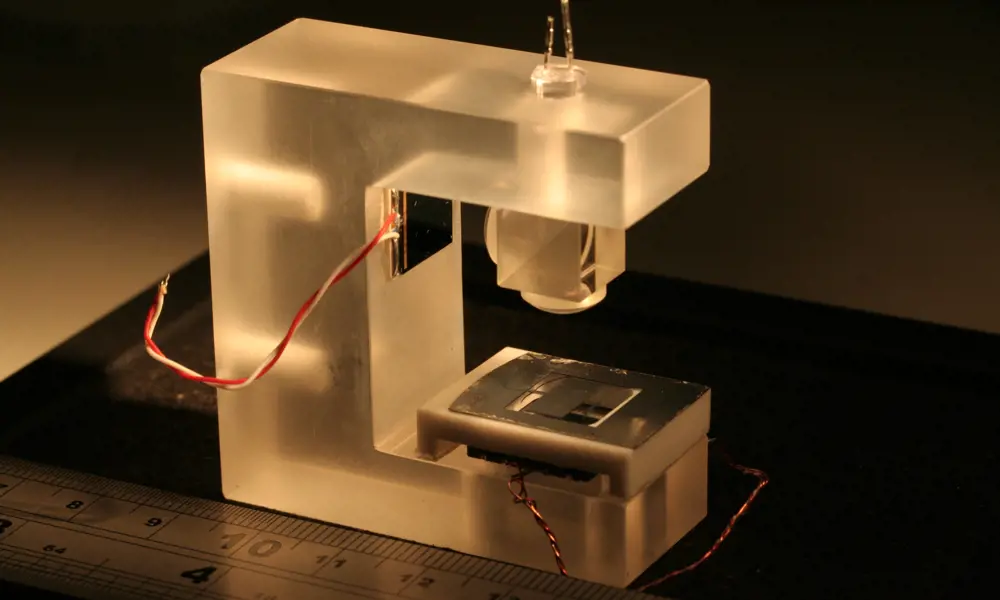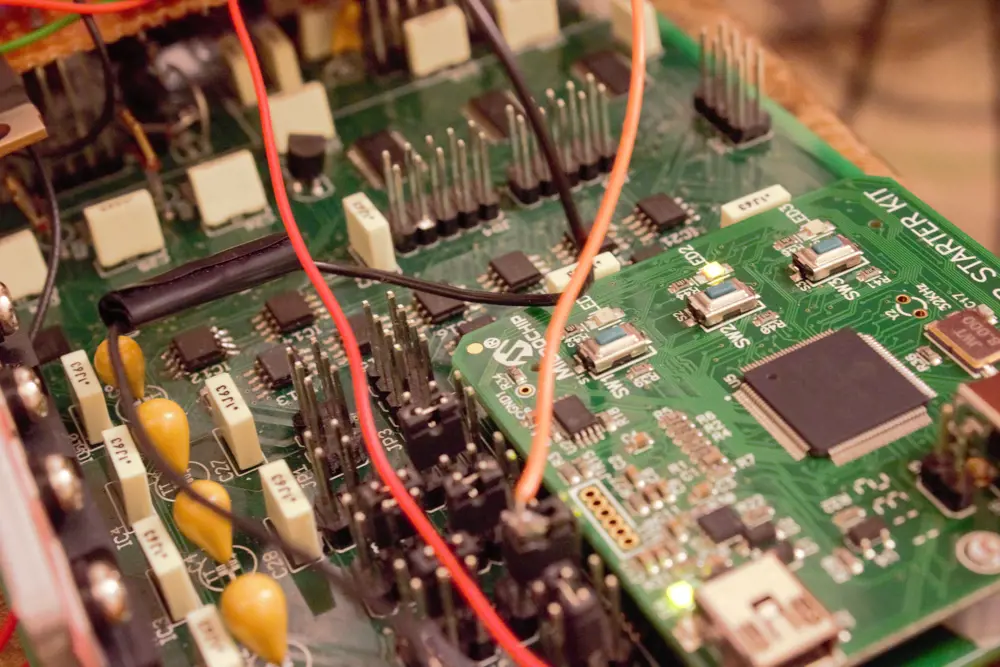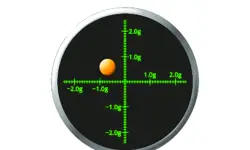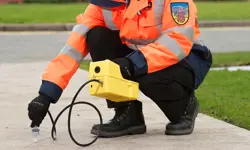
The world's smallest gravimeter
The Wee-g is based on technology that is used in mobile phones to measure acceleration. These devices are tiny mechanical structures made from silicon, and are called micro-electromechanical systems (or MEMS). MEMS accelerometers in phones are mainly used to measure which direction the phone is pointing in to rotate the screen when it is tilted and for apps such as compasses or stargazing. By using this technology in the Wee-g, Professor Giles Hammond and his team hope to make a gravity sensor that is significantly smaller and cheaper than those currently available.
MEMS accelerometers in phones are mainly used to measure which direction the phone is pointing in to rotate the screen when it is tilted and for apps such as compasses or stargazing
Gravimeters are used to measure the Earth’s gravitational field. Existing models are large and expensive, which can often make them impractical. They are mainly used in the oil and gas industry to discover fossil fuel deposits and are usually based around a weight on a spring that is sensitive to tiny fractional changes within Earth’s gravity.
Gravimeters are used to measure the Earth’s gravitational field. Existing models are large and expensive, which can often make them impractical
The new instrument is significantly smaller and centres around a weight hanging from microscopic springs. It is much more sensitive than the accelerometer found in a smartphone. The weight is made from a 0.2-millimetre-thick silicon wafer, with small silicon springs – 10 times thinner than a human hair – that hold the weight in place. When it is held vertically, gravity pulls the weight downwards. If the pull changes slightly, then the weight moves. This is measured by using a light and recording the movement of the shadow, which is detected by a photodiode, converted to current and recorded. As the springs are so thin, they are activated by tiny gravitational changes.
The Wee-g was initially tested by the University of Glasgow team by measuring the Earth’s tides over several days. Earth tides are similar to the tides that affect the sea, but they affect the Earth’s diameter. This means that Glasgow moves up and down by around 20 centimetres over 12 to 13 hours, resulting in gravitational acceleration that the team was able to measure. The change in gravity moves the tiny weight on the Wee-g’s springs.
The change in gravity moves the tiny weight on the Wee-g’s springs

The Wee-g device can be controlled by an electronics board the size of a smartphone
As the Wee-g can detect very small gravity changes, it has several potential commercial uses. The device could be used for the environmental monitoring of volcanoes and magma build-up, providing an early warning system. It could also have uses in security and defence, for example in cargo scanning. The Wee-g could be used to conduct gravity surveys, detecting underground tunnels or sinkholes before land is purchased. Civil engineers could use it to detect such features as abandoned mineshafts, and the team believes that, in the future, gravity surveys could become as relevant as environmental surveys.
The researchers recently carried out tests of the device in the field, to confirm whether it worked as expected. This was done by measuring the change in gravity when moving the device to a different altitude (this works as moving higher increases the distance from the centre of the planet). The tests were carried out in two ways: firstly, by using a regular lift, and secondly by going up and down the Campsie Fells, a range of hills in Glasgow. The researchers saw a clear change in gravity between the top and bottom points in both settings, demonstrating that, as well being able to detect small changes in gravity, the device is useful and portable outside the lab.
The Wee-g is about the size of a shoebox, and the sensor itself is the size of a postage stamp. The researchers are about to start work with Kelvin Nanotechnology to make the device even smaller. They expect that the device will be about the size of a USB drive, controlled with an electronics board that could be around the size of a smartphone.
***
This article has been adapted from "The world's smallest gravimeter", which originally appeared in the print edition of Ingenia 73 (December 2017)
Keep up-to-date with Ingenia for free
SubscribeRelated content
Electricals & electronics

Accelerometers
Used in earthquake measurements, laptops, planes and even in stargazing apps, today’s accelerometers are much smaller than when they were first developed in 1927. Find out how they detect movement and vibration.

How to maximise loudspeaker quality
Ingenia asked Dr Jack Oclee-Brown, Head of Acoustics at KEF Audio, to outline the considerations that audio engineers need to make when developing high-quality speakers.

Cable fault locator
The winner of the Institute of Engineering and Technology’s 2014 Innovation Award was EA Technology’s CableSnifferTM, which uses a probe and chemical sensing technology to identify faults, saving energy companies millions of pounds each year.

High speed evolution
In December 2010, Eurostar International Ltd awarded a contract for 10 new high speed trains to Siemens. The company has used a system developed over decades to maximise the performance and passenger-carrying ability of its 320km/h trains.
Other content from Ingenia
Quick read

- Environment & sustainability
- Opinion
A young engineer’s perspective on the good, the bad and the ugly of COP27

- Environment & sustainability
- Issue 95
How do we pay for net zero technologies?
Quick read

- Transport
- Mechanical
- How I got here
Electrifying trains and STEMAZING outreach

- Civil & structural
- Environment & sustainability
- Issue 95